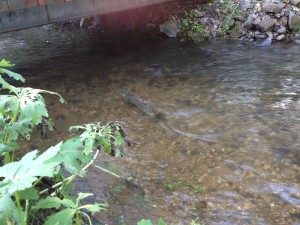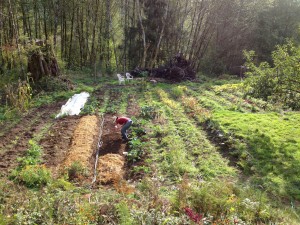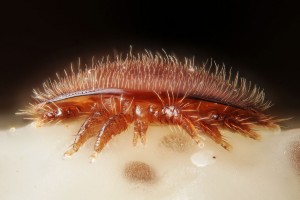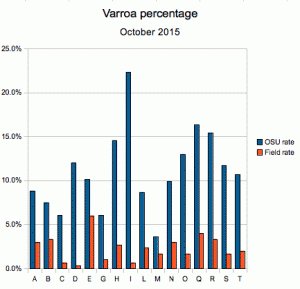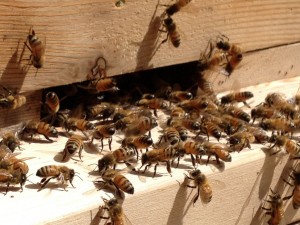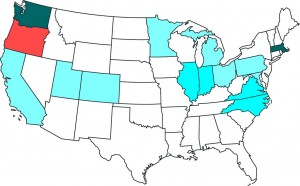Greetings, fellow bee enthusiasts!
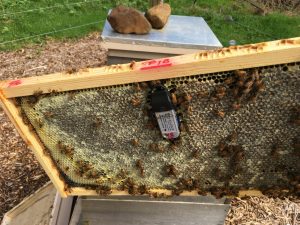 Spring is here, and the bees have awoken from their long winter’s nap. April 1 was the official end for the data recording period for the Cozy Bee Project, and I have pulled all the data sensors and uploaded the tiny bits and bytes that will hopefully tell us something useful about hive roof design and overall bee health. I have some great news to report, as well: our bees did really well from a survival standpoint! Nationally, beekeepers lose about a third of their bees every winter- a staggering amount of damage, due to a complicated set of physiological and environmental challenges that have become increasingly worse since the 1980s. The Bee Informed Partnership does valuable work in collecting survival data, and you can see a cool graphic about it here.
Spring is here, and the bees have awoken from their long winter’s nap. April 1 was the official end for the data recording period for the Cozy Bee Project, and I have pulled all the data sensors and uploaded the tiny bits and bytes that will hopefully tell us something useful about hive roof design and overall bee health. I have some great news to report, as well: our bees did really well from a survival standpoint! Nationally, beekeepers lose about a third of their bees every winter- a staggering amount of damage, due to a complicated set of physiological and environmental challenges that have become increasingly worse since the 1980s. The Bee Informed Partnership does valuable work in collecting survival data, and you can see a cool graphic about it here.
We, however, only lost two hives out of the 16 we started with! That’s fantastically good, and well within sustainable limits. The survivors look very healthy, and I imagine there will be enough bees to split in only a few weeks, bringing our total colonies back up to 16 and beyond.
There is some bad news as well, though. Of the 18 sensors that were recording data, we had a disappointingly high failure rate. Eight of them (nearly half) reported partial or no data due to technical malfunctions. That is super aggravating for me. Luckily, that was half the reason to test multiple copies of the same hive configuration, so we will still have presentable findings once I’ve crunched the numbers; they just won’t be as statistically solid as I would have preferred. Now all I have to do is make sense of the approximately 180,000 numbers in my database. 😛
Before I leave you, though, I’d like to tell you the stories of the various colonies that participated in the survey. Look for yours below: 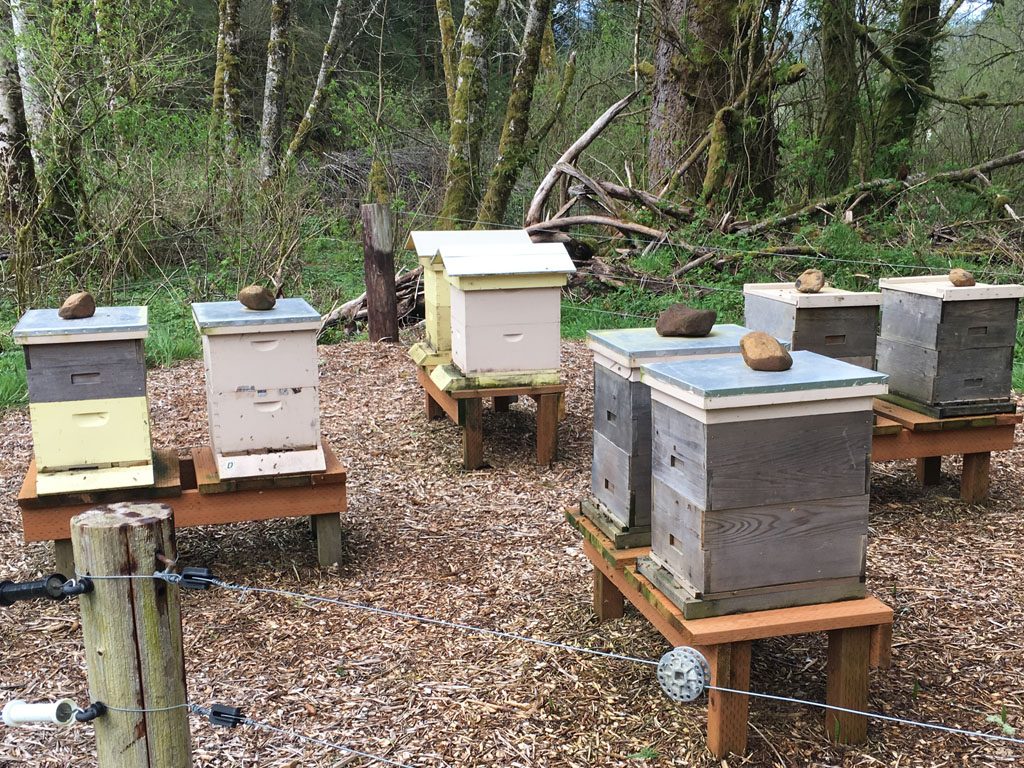
The Bzzzy-Beetles: Gravel Creek apiary. Sadly, they did not survive the winter. They were plagued by high varroa mite levels despite treatment, and autopsy revealed that’s what eventually killed them. Before they did so, however, they produced more honey than anyone else (105 pounds!)
Carla Maria: Gravel Creek apiary. They also produced a lot of honey, at 90 pounds. They overwintered just fine, but their sensor failed, so their participation in the study will be limited to disease and mite levels.
Hoosier Queen: Foley Creek apiary. Much like Carla Maria, their sensor failed but they did just fine over the winter. They got off to a slow start last fall, though, and didn’t produce any honey.
Bruening’s Buzzers: Foley Creek apiary. A solid study colony, they produced an average amount of honey (60 pounds), did fine over winter, and reported average mite levels.
Whimsey: Gravel Creek apiary. Failed sensor. No honey, but hey, they survived, so what more could you ask for? They look healthy now and I am sure they will be a great producer in 2017.
Moore Honey!: Gravel Creek apiary. Despite their ambitious name, they too failed to produce honey. What they DID produce, though, was a lot of nosema disease… ten times anyone else. Despite that, they too survived and look pretty strong now. Their sensor failed, too.
Lincoln City: Gravel Creek apiary. No honey, but some of the lowest varroa mite loads of anyone. Healthy now. Unfortunately, their sensor failed.
Planet of the Apiaries: Gravel Creek apiary. Not just an awesome name; thees guys are one of two colonies that survived the Great Flood of 2015, so they are already heroes in my book. Not only that, but they produced honey (30 pounds), reported super low mite loads (2%), and their data logger actually worked. Yay bees!
el Daddo: Gravel Creek Apiary. A fairly health colony with midrange honey production. Unfortunately, their sensor failed too, so I don’t have any remperature and humidity data for them. I can’t wait to see what they do next year.
Honey’s Home: Foley Creek apiary. The other survivor of the Great Flood of 2015, they had the lowest pre-treatment mite loads of anyone (1%) and gave a full winter’s worth of sensor data too. Too bad they didn’t make any surplus honey, but there’s always next year.
Cousin Ruth: Foley Creek apiary. Healthy colony with low mite numbers. Honey yield was low (15 pounds) but they are a new colony, so that’s to be expected. Failed sensor.
Pattee’s Bees: Gravel Creek apiary. These buzzers did just fine, despite a pretty high mite load. Some guys can just work with what they have, right? They made 30 pound of honey, and provided a full winter of data, so they get an A in my book.
Octavia Place: Gravel Creek apiary. Big honey producer (60 pounds) despite big mite loads. Full data set, too. Winner!
PapaJoe’zzz Cubbees (#WeAreGood): Foley Creek apiary. A new colony, no honey. But they overwintered fine and gave the full data set. Also if interests is that they had a pretty high mite load (10%) but responded really well to treatment, and went into the winter with no mites reportable. I imagine they will do pretty well in the coming season.
The Bees Knees: Foley Creek apiary: Much like the previous bees, a new colony with no honey production, but healthy and strong through the winter, giving a solid data set for temperature and humidity. Bees like this are carrying the research. Thanks, bees!
I hope that was entertaining. I’m excited to get into the analysis part of the research, so I’ll keep you posted as things develop. May your spring be warm and filled with bees.

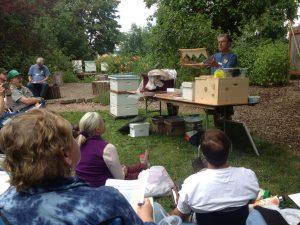
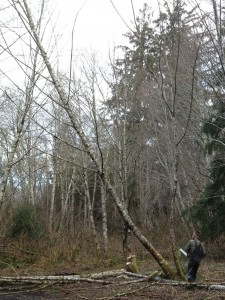
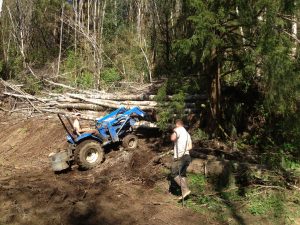
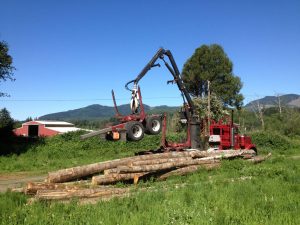
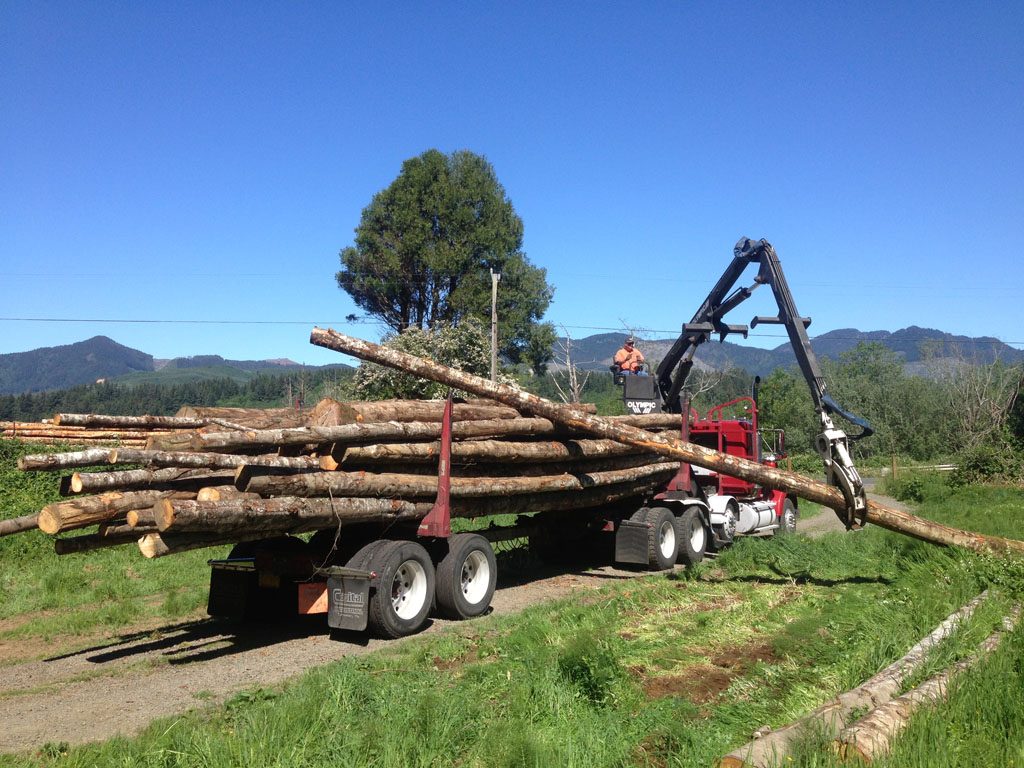
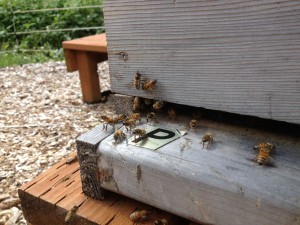
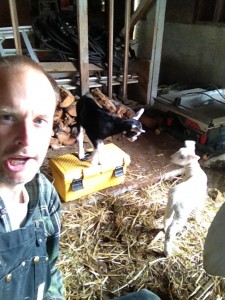

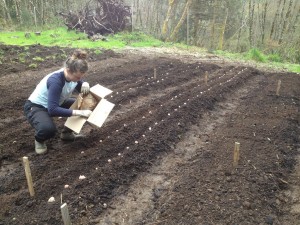
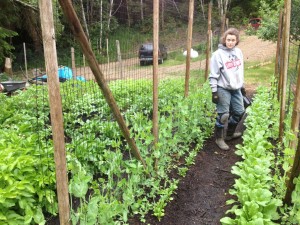


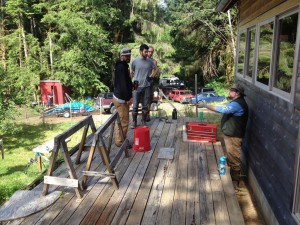
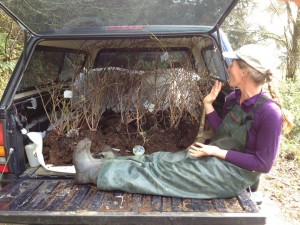

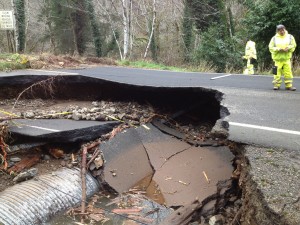
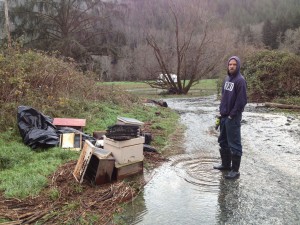
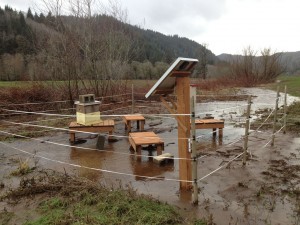
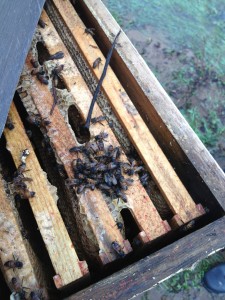 This all begs the question “what now?” I’ve been pondering it for a few weeks. Obviously, the Nehalem River apiary will not be giving me any useful data for the Cozy Bee Project. To make things worse, there have been hiccups with the data collection computer at the other site, so I still don’t have any usable data from the Foley Creek apiary either. ARGH!!!! I need to face the reality that the entire project is going to be set back a year. I’m sorry, everyone.
This all begs the question “what now?” I’ve been pondering it for a few weeks. Obviously, the Nehalem River apiary will not be giving me any useful data for the Cozy Bee Project. To make things worse, there have been hiccups with the data collection computer at the other site, so I still don’t have any usable data from the Foley Creek apiary either. ARGH!!!! I need to face the reality that the entire project is going to be set back a year. I’m sorry, everyone.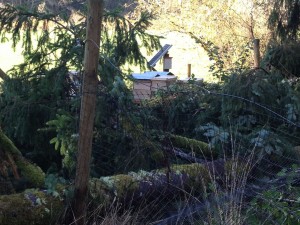 You always have to get nervous when someone stars the conversation with “I have something to show you, but the bees are OK…” Turns out that by some miracle, the tree fell between my apiary and the orchard, narrowly missing both. It completely destroyed the deer fence around the orchard and also squashed the electric bear fence around the hives. Honestly, that’s not a bid deal. In fact, the bear fence was a portable type, and I may not even have to replace any parts… it’s hard to tell right now, because it’s under a giant tree. But I couldn’t be more relieved. If the tree had fallen about 15 more degrees to the west, it would have bullseyed all 8 hives, putting “tree” even higher on the list of bee-killers than “bear”.
You always have to get nervous when someone stars the conversation with “I have something to show you, but the bees are OK…” Turns out that by some miracle, the tree fell between my apiary and the orchard, narrowly missing both. It completely destroyed the deer fence around the orchard and also squashed the electric bear fence around the hives. Honestly, that’s not a bid deal. In fact, the bear fence was a portable type, and I may not even have to replace any parts… it’s hard to tell right now, because it’s under a giant tree. But I couldn’t be more relieved. If the tree had fallen about 15 more degrees to the west, it would have bullseyed all 8 hives, putting “tree” even higher on the list of bee-killers than “bear”.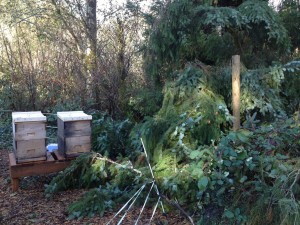 As it is, I still have some work to do. Farmer Ned offered to put a chain on the tree and drag it away with his tractor, but that’s not a good plan, as the limbs are all entangled with the hive stands, and it would probably knock half the hives over. So I’m going to go back out once the weather clears up a little, with bee suit and chainsaw, and cut that thing up so I can get the fence fixed and even get to the hives (the tree is also across the access road).
As it is, I still have some work to do. Farmer Ned offered to put a chain on the tree and drag it away with his tractor, but that’s not a good plan, as the limbs are all entangled with the hive stands, and it would probably knock half the hives over. So I’m going to go back out once the weather clears up a little, with bee suit and chainsaw, and cut that thing up so I can get the fence fixed and even get to the hives (the tree is also across the access road).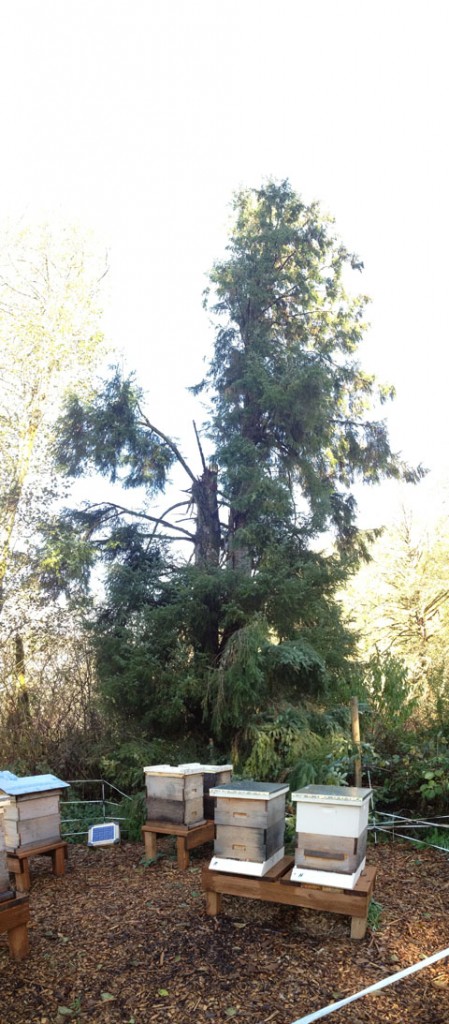 I’ll gadly take two hours of chainsaw work in a bee suit over picking up destroyed hives any day.
I’ll gadly take two hours of chainsaw work in a bee suit over picking up destroyed hives any day.